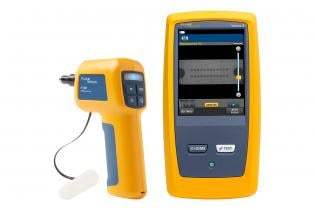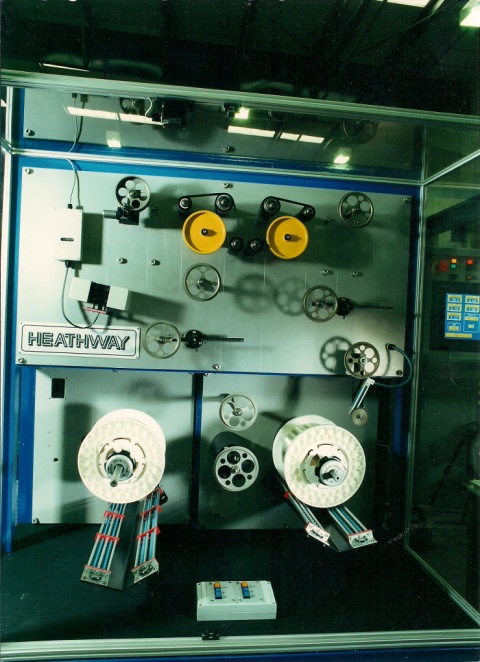Comprehending Just How an Optical Measurement System Boosts Accuracy in Industrial Applications
Optical measurement systems play a vital duty in boosting precision across numerous commercial applications. By leveraging innovative technologies such as laser interferometry and 3D imaging sensing units, these systems supply high-resolution, non-contact measurements. This capability lessens the threat of damaging delicate elements while ensuring precision. The influence of these systems prolongs past simple dimensions. Discovering their benefits, applications, and future patterns reveals a complicated landscape of technology and obstacles that benefits closer assessment.
The Basics of Optical Measurement Systems
Optical measurement systems function as essential devices in numerous industrial applications, supplying precise information collection and evaluation. These systems make use of light as a primary ways of measurement, leveraging optical concepts to assess measurements, placements, and surface features of things. They incorporate parts such as lasers, cameras, and sensors, which collaborate to record high-resolution pictures and information.
The technology enables non-contact dimensions, lessening the risk of damaging sensitive parts. Optical measurement systems are versatile, finding energy in high quality control, setting up verification, and dimensional evaluation throughout different industries. They are particularly effective in settings where typical measurement techniques might fail, such as gauging intricate geometries or observing rapid activities.
As markets remain to advance, the integration of optical measurement systems will continue to be critical for ensuring accuracy and effectiveness, inevitably boosting product top quality and functional efficiency in different producing procedures.
Key Technologies Behind Optical Measurement
Trick innovations such as laser interferometry techniques and 3D imaging sensors play an essential role in the efficiency of optical measurement systems (optical measurement system). These modern technologies make it possible for precise measurements and detailed analysis in different commercial applications. Understanding their functionalities is vital for harnessing the full possibility of optical measurement systems
Laser Interferometry Techniques
Many laser interferometry techniques have actually transformed the area of optical measurement, supplying unmatched accuracy and precision in various commercial applications. These techniques utilize the disturbance of coherent light waves to measure distance, variation, and surface area irregularities with nanometer-level precision. Usual methods include Michelson interferometry, which divides a beam and evaluates phase changes, and Fabry-Pérot interferometry, known for its high resolution in determining tiny changes. Additionally, laser Doppler interferometry employs frequency shifts to assess velocity, making it invaluable in vibrant dimensions. The versatility of these techniques permits their integration right into diverse production procedures, boosting quality assurance and ensuring adherence to rigorous tolerances. Therefore, laser interferometry remains to play a critical role ahead of time industrial measurement requirements.
3D Imaging Sensors
Advancements in measurement innovation have resulted in the advancement of 3D imaging sensors, which play a significant function in optical measurement systems. These sensing units record three-dimensional information through various methods such as triangulation, time-of-flight, and structured light. By accurately rebuilding the form and dimensions of items, 3D imaging sensing units improve the precision of dimensions in industrial applications. They offer real-time comments, assisting in top quality control and guaranteeing that parts fulfill rigid requirements. Additionally, their capability to run in tough environments, such as differing illumination conditions, makes them indispensable in producing procedures. As sectors significantly adopt automation, the assimilation of 3D imaging sensors right into optical measurement systems is expected to drive further improvements in effectiveness and accuracy.
Benefits of Optical Measurement in Sector
Standard measurement techniques have actually long been the requirement in commercial settings, optical measurement systems offer considerable benefits that boost precision and effectiveness. These systems use light to capture information, resulting in high-resolution measurements that are frequently unattainable with traditional methods. The non-contact nature of optical dimensions reduces the threat of damaging delicate elements during the assessment process. In addition, the speed of optical dimensions permits quick information procurement, promoting timely decision-making in busy commercial environments.
Optical systems are adaptable, efficient in determining numerous materials and shapes without the requirement for comprehensive recalibration. This adaptability contributes to enhanced process and efficiency. The automation potential of optical measurement systems reduces human mistake, making sure regular quality control. Generally, the integration of optical measurement modern technology stands for a dynamic change in the direction of improved precision and dependability in industrial operations, ultimately leading to boosted item high quality and operational effectiveness.
Applications of Optical Measurement Systems

Optical measurement systems play a pivotal function in improving production process optimization by supplying accurate information for decision-making. These systems assure high quality control assurance with real-time surveillance and analysis of production metrics. As industries increasingly take on these modern technologies, their effect on effectiveness and item reliability ends up being evident.
Production Refine Optimization
Enhancing production process efficiency is progressively dependent on the integration of optical measurement systems. These systems supply real-time data on numerous criteria, enabling makers to examine processes with a high degree of accuracy. By allowing specific dimensions of measurements, surface qualities, and product homes, optical measurement systems promote the identification of inadequacies and traffic jams in production lines. The prompt responses from these systems equips designers to make informed choices, leading to enhanced machining, assembly, and ending up processes. The ability to keep track of conditions constantly permits for adaptive changes, minimizing downtime and waste. As markets aim for greater productivity and minimized functional expenses, optical measurement systems become crucial devices for boosting production process optimization.

Top Quality Control Guarantee
The combination of optical measurement systems significantly influences top quality control guarantee in commercial settings. These systems provide exact and non-destructive dimensions, allowing manufacturers to detect problems and variances early in the manufacturing process. By utilizing innovative imaging techniques, such as laser triangulation and interferometry, optical measurement systems assure that components fulfill rigid specs. This facilitates real-time tracking, reducing waste and minimizing the danger of damaged products getting to the market. Furthermore, the data gathered can be assessed to improve manufacturing processes even more, bring about continuous enhancement. Ultimately, the adoption of optical measurement systems boosts reliability and uniformity in quality assurance, cultivating higher confidence amongst stakeholders and customers alike in the last products supplied.
Instance Studies: Successful Implementations
Countless industries have effectively integrated optical measurement systems to enhance their functional effectiveness and item top quality. In the automotive market, a noticeable producer adopted a laser triangulation system to keep track of the placement of automobile components. This implementation Extra resources significantly decreased assembly errors, resulting in improved safety and security and reduced prices.
In the aerospace sector, a leading airplane supplier used optical assessment for accuracy measurements of wind turbine blades, attaining a reduction in producing resistances and better performance criteria.
A consumer electronic devices firm carried out optical measurement modern technology during the production of mobile phone displays, resulting in improved quality control and a reduction in defective products.
These study highlight just how optical measurement systems not just enhance precision yet likewise contribute to overall operational effectiveness, demonstrating their worth across numerous sectors. By addressing specific demands, these systems have proven to be crucial devices in modern-day commercial applications.
Difficulties and Limitations of Optical Measurement
While optical measurement systems use substantial advantages in various commercial applications, they are not without their obstacles and limitations. One major worry is sensitivity to environmental conditions, such as temperature level changes, moisture, and dust, which can adversely influence measurement accuracy. In addition, optical systems typically need specific alignment and calibration, making them susceptible to human mistake throughout arrangement and procedure. Another constraint is the capacity for interference from ambient light, which can distort measurements and require intricate filtering system techniques. Moreover, specific products and surface areas might present troubles, as reflective or transparent characteristics can cause irregular analyses. The expense of premium great post to read optical elements and systems can additionally be a barrier for some sectors, limiting extensive fostering. Ultimately, specialized training is often required for workers to properly run and keep these systems, including to the total complexity and functional difficulties.
Future Trends in Optical Measurement Innovation
As innovations in technology remain to form industrial procedures, the future of optical measurement systems is poised for considerable evolution. Arising patterns indicate a change towards enhanced assimilation of expert system and artificial intelligence, allowing systems to assess data in real-time, determine patterns, and improve decision-making procedures. On top of that, the advancement of miniaturized sensing units and progressed optics is expected to lead to even more compact and flexible measurement solutions, making them available for try these out a bigger array of applications.
Additionally, the consolidation of 3D imaging and high-resolution abilities will certainly allow for unmatched precision in measurements, which is necessary for sectors such as aerospace and automotive. The promote automation and Market 4.0 will certainly additionally drive the need for optical measurement systems that can conveniently interface with other modern technologies. As these fads unravel, optical measurement systems will likely end up being important to achieving better performance and precision throughout numerous industrial sectors.

Frequently Asked Inquiries
Just How Do Optical Measurement Systems Compare to Conventional Measurement Methods?
Optical measurement systems supply higher accuracy and rate compared to conventional techniques - robotic vision. They minimize human mistake, enhance information collection effectiveness, and give real-time results, making them progressively chose in numerous industrial applications for exact dimensions
What Industries Advantage the Many From Optical Measurement Systems?
Optical measurement systems significantly profit industries such as aerospace, vehicle, and electronic devices. Their capacity to offer high-precision measurements improves quality assurance, reduces production errors, and improves general effectiveness, making them necessary in competitive manufacturing atmospheres.
Can Optical Measurement Systems Be Customized for Particular Applications?
Optical measurement systems can undoubtedly be personalized for specific applications. By changing parameters such as wavelength, resolution, and calibration strategies, markets can tailor these systems to satisfy special precision and precision requirements efficiently.
What Is the Upkeep Need for Optical Measurement Systems?
The upkeep demands for optical measurement systems typically consist of routine calibration, cleansing of optical elements, and software updates. Sticking to these practices guarantees precision, reliability, and long life of the measurement equipment in numerous applications.
Exactly How Do Environmental Elements Influence Optical Measurement Accuracy?
Ecological aspects, such as temperature level changes, moisture, and dust, considerably effect optical measurement precision. These elements can misshape light paths and disrupt sensing unit analyses, inevitably endangering the dependability and precision of measurements in industrial setups.